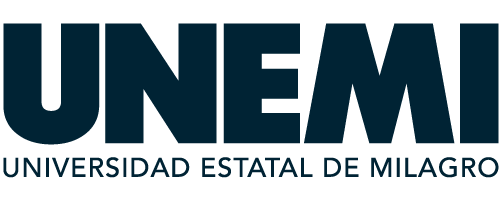TURBO C++ version 3.0: USER'S GUIDE
Material type: TextLanguage: Inglés Original language: Inglés Publication details: Scotts Valley, CA [California], USA [Estados Unidos de América]: Borland International, ©1992. Description: XV, 772 p.: 22,8 x 17,9 cm. il., tablas, [+1 quick reference booklet]Content type:
TextLanguage: Inglés Original language: Inglés Publication details: Scotts Valley, CA [California], USA [Estados Unidos de América]: Borland International, ©1992. Description: XV, 772 p.: 22,8 x 17,9 cm. il., tablas, [+1 quick reference booklet]Content type: - texto
- Impreso
- papel
- 21° 005.1 B246t
| Item type | Current library | Call number | Copy number | Status | Notes | Date due | Barcode | |
|---|---|---|---|---|---|---|---|---|
|
|
CRAI UNEMI U. A. C. Ingeniería (FACI) | 005.1 BORt 1992 (Browse shelf(Opens below)) | Ej.1 | Available | Hilera: SISTEMAS 9 Estantería: INGENIERÍA | 43302 |
Index: p. 713
Appendix: p. 629
Figures: XV
Introduction: p. 1
Introduction.-
What's in Turbo C++.-
Hardware and software requirements.-
The Turbo C++ inmplementation.-
The Turlo C++ package.-
The User's Guide.-
Online documentation.-
Using tlhe manual.-
Programmers learning C or C++.-
Typefaces and icons used in these books.-
How to contact Borland.-
Resources in your package.-
Borland resources.-
Part 1 Using Turbo C++.-
Chapter 1 Installing Turbo C++.-
Using INSTALL.-
Protected mode and memory.-
DPMIINST.-
DPMIMEM.-
DPMIRES.-
Extended and expanded memory.-
Running Turbo C++.-
files.-
Laptop systems.-
The README file.-
The FILELIST.DOC and HELPME!.DOC.-
Example programs.-
Customizing the IDE.-
Chapter 2 IDE basics.-
Starting and exiting.-
Command-line options.-
The /b option.-
The /d option.-
The /e option.-
The /h option.-
The /l option.-
The /m option.-
The /p option.-
The /r option.-
The /s option.-
The/x option.-
Exiting Turbo C++ .-
IDE components.-
The menu bar and menus.-
Shortcuts.-
Command sets.-
Native option.-
Turbo C++ windows.-
Window management.-
The status line.-
Dialog boxes.-
Action buttons.-
Radio buttons and check boxes.-
Input and list boxes.-
Configuration and project files.-
The configuration file.-
Project files.-
The project directory.-
Desktop files.-
Changing project files.-
Default files.-
IDE menus.-
Syntax highlighting.-
IDE cross-reference.-
Chapter 3 An introduction to C++ .-
How to run the examples.-
Basic programming operations.-
Basic structure of a C++ program.-
Working with numbers.-
Numeric data types.-
Integers.-
Integer modifiers.-
The long modifier.-
The signed and unsigned.-
modifiers.-
Floating-point numbers.-
The floating-point types.-
Variables.-
Initializing variables.-
Assignnent statements.-
Combination assignments.-
Variable names.-
More about input and output.-
Formatting with escape sequen.-
Arithmetic operators.-
Arithmetic and type conversion.-
Typecasting.-
Combining arithmetic and assignment.-
Increment and decrement.-
Working bit by bit.-
Expressions.-
Evaluating an expression.-
Assigning a value in an expression.-
Characters and strings.-
Input and output for single characters.-
Displaying a character.-
Displaying character strings.-
Testing conditions and making choices.-
Using relational operators.-
Using logical operators.-
Branching with if and if...else.-
Multiple choices with if...else.-
Multiple choice tests: switch.-
Repeating execution with loops.-
The while loop.-
The do while loop.-
The for loop.-
break and continue.-
Nested loops.-
Choosing appropriate loops.-
Program design with functions and macros.-
Defining your own functions.-
The function prototype.-
Function declarations under.-
Kernighan and Ritchie.-
The function definition.-
Processing within the function.-
The function return value.-
Using the return value.-
Multifunction programs.-
Function prototypes and global declarations.-
Setting up the graphics display.-
Calculating the graphics coordinates.-
Drawing the planets.-
Header files, functions, and libraries.-
Scope and duration of variables.-
Scope.-
Duration.-
Using constant values.-
Building data structures.-
Declaring and initializing an array.-
Arrays with multiple dimensions.-
Arrays and strings.-
Renaming types.-
Enumerated types.-
Combining data into structures.-
Using parts of a structure.-
Pointers.-
Declaring and using a pointer.-
Pointers and strings.-
Pointer arithmetic.-
Pointers, structures, and lists.-
Using pointers to return values from functions.-
Using system resources.-
Openinga stream.-
Chapter 4 Object-oriented.-
programming with C++ .-
Encapsulation.-
Inheritarnce.-
Polymorphism.-
Overloading.-
Modeling the real world with classes.
There are no comments on this title.
